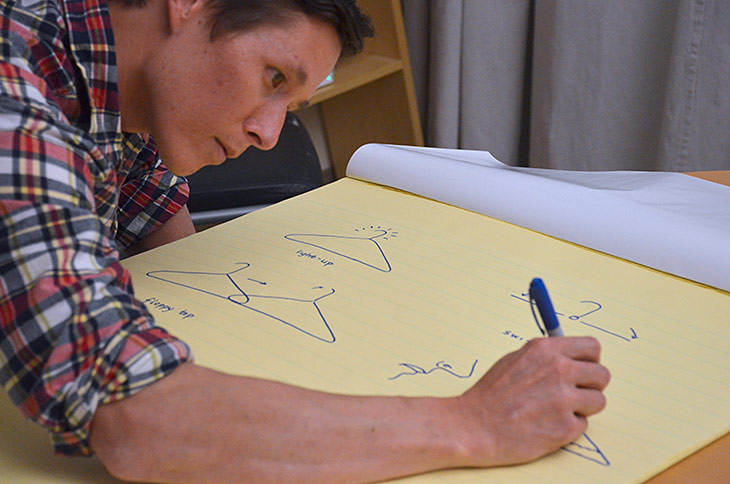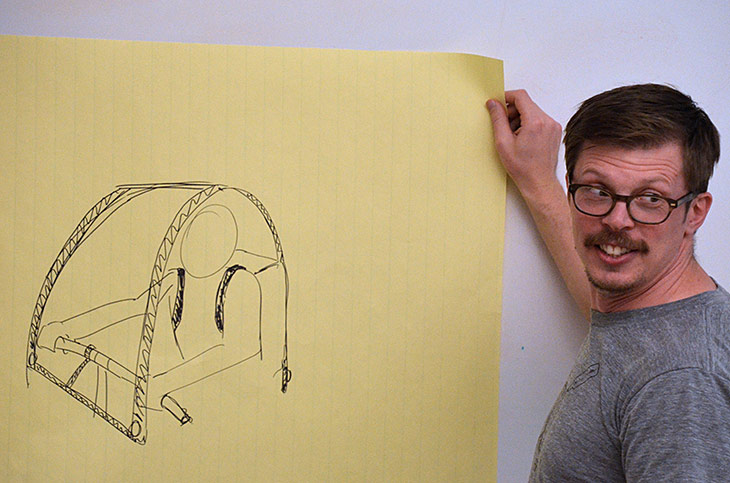Creative Workshops: Think Differently
Mark Steinruck, Former User Experience Designer
Article Category:
Posted on
Last year Leo Burnett Worldwide wrote about their experience with Farmhouse Lab during Chicago Ideas Week. They assembled a group of innovators and big thinkers for a workshop titled Reinventing the Everyday Object. Their goal was to consider how they could take ordinary, everyday objects and improve them to serve a more useful purpose.
Workshops can be a great way to break out of your day-to-day routine and think about something from a fresh perspective. They also have benefits like team building, learning how to generate a lot of ideas quickly while honing in on the best one, building on the ideas of others, and thinking on your toes. So I assembled some of my fellow Viget team members for our own workshop. We used the same premise of reinventing everyday objects but tried to stick to a one-hour timeframe. By the end of the hour, we had some brilliant ideas floating around the office, including:
- a clothes hanger with LED lights on the top that could indicate things like size and color, or even how long it’s been since you wore something
- a backpack umbrella that attaches to bike handlebars covering the rider like a tent and retracts when you’re done
- a streamlined smartphone case doubling as a wallet that can hold just enough cash and credit cards, only opens with fingerprint security, and connects to apps on the phone to handle receipts
Start Your Own
Creative workshops like this are a great exercise to do individually or with teams. Here are a few things that might help you get started:
Rules
Keep it light. This means less overhead for you as the organizer and more room for innovation.
Time
- Keep it to about one hour. The breakdown looks something like this:
- 5 minutes to explain the exercise.
- 40 minutes to brainstorm.
- 15 minutes to present ideas.
Teams
- If you have multiple people, teams of 2-4 work well.
- Mix up the teams with people from different disciplines, backgrounds, and personality-types.
A few things specific to the Reinventing Everyday Objects workshop:
Premise
The premise of this workshop is to identify problems or areas of improvement for the object and design around them.
Objects
- Have physical objects available for the teams to hold
- Some of the objects that we had to work with included:
- Umbrella
- Doorbell
- Hanger
- Wallet
- Alarm clock
- Shower Head
- Light switch
Supplies
- Whiteboards are helpful for quick sketching and iterating ideas.
- Giant easel-sized Post-it paper is also helpful for sharing ideas at the end of the workshop if everyone isn’t in the same room.
Future Workshops
Based on suggestions from the team, here are a few things we might change or incorporate into future workshops:
- Establish one problem that everyone works on.
- Establish whether the end-goal is many different ideas, or one good idea.
- Establish whether the ideas should be practical or not.
- Structure final presentations more like a pitch, and all of the participants can decide which idea they would invest their money in for development.
- Get everyone out of the office to observe a situation, or just to change scenery.
After the workshop, several people said that stepping away from the screen to think creatively about tangible, non-digital things, was invigorating. Others said that it was great to work with team members that they don’t usually get to work with. We all went back to work ready to tackle challenges in new, creative ways.
Try taking some time away from what you do everyday to think about something differently. If you’ve ever participated in creative workshops, or plan to organize one in the future, I’d love to hear about it.

